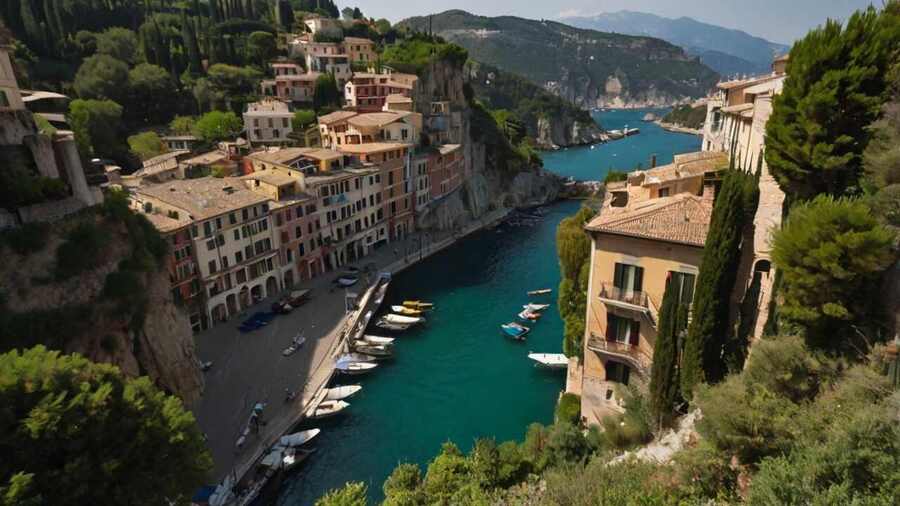Published on
October 9, 2025
Italy’s tourism sector is set for significant growth in 2025, with increased international arrivals expected to be the main driver. The country is projected to welcome 146.3 million tourists, a 4.7% rise from 2024, with foreign visitors making up the majority of this increase. While domestic tourism is expected to decline slightly due to rising costs, international visitors will fuel growth, contributing to an anticipated €135 billion in tourism revenue. This influx of foreign tourists will not only bolster the country’s economy but also support local businesses and job creation. Despite challenges like inflation and rising travel prices, Italy’s cultural and scenic attractions continue to draw international travelers, ensuring the tourism sector’s positive outlook for 2025.
Italy is preparing to welcome 146.3 million tourists in 2025, marking an increase of 4.7% from the previous year. This growth highlights the nation’s sustained popularity as a top destination, showcasing its resilience despite the pressures of rising travel costs and global inflation.
Alongside this surge in arrivals, overnight stays are projected to reach nearly 476.8 million, reflecting a 2.3% increase compared to 2024. This growth reaffirms Italy’s position as a premier tourist hub, attracting visitors year after year thanks to its vibrant culture, world-renowned cuisine, and stunning landscapes.
International Tourism Leads the Charge
The key driver behind Italy’s tourism growth in 2025 is international visitors. International arrivals are expected to rise by 11.3%, reaching 82.3 million, while domestic tourism is forecasted to decline slightly by 2.7%, totaling around 64 million visitors. This shift indicates that Italy is becoming even more reliant on foreign travelers to maintain its robust tourism numbers.
International visitors are projected to account for the lion’s share of overnight stays, with an estimated 263 million nights, up 3.5% from 2024. In comparison, domestic tourists are expected to contribute around 214 million nights, a modest increase of 0.8%. The decline in domestic tourism is largely attributed to rising costs across the travel sector, with higher prices for transportation, accommodation, and dining deterring some locals from holidaying within Italy.
Economic Contribution of Tourism
Tourism continues to be a significant economic engine for Italy, with the total spend expected to approach €135 billion in 2025, marking a 6.7% increase from the previous year. The sector remains a vital contributor to Italy’s economy, providing jobs, supporting local businesses, and generating substantial revenue for regions across the country.
Despite inflationary pressures, Italy’s diverse attractions continue to make it a sought-after destination for international travelers. The country’s blend of historical landmarks, scenic beauty, and rich culinary heritage ensures it remains competitive on the global stage. However, the impact of rising prices cannot be ignored. Domestic airfare prices are projected to increase by 19.4%, a sharp contrast to a smaller 0.3% rise in international flights. Package holidays and accommodation prices are also expected to see significant hikes, making domestic travel more expensive for Italian residents.
A Broader European Trend
Italy’s tourism growth in 2025 aligns with similar trends seen across southern Europe. Countries like Spain and Greece are experiencing steady but slower growth following a period of rapid recovery post-pandemic. For instance, Spain’s tourism industry grew by only 2.8% this past summer, with foreign visitors driving the majority of the gains.
While domestic tourism may face challenges due to economic pressures, Italy’s global appeal ensures a strong flow of international visitors. The resurgence of long-haul travel, along with easing air capacity limitations, is expected to continue fueling demand for Italian destinations. Tourists from Europe, North America, and Asia will continue to flock to Italy in 2025, boosting the country’s tourism revenues.
Focus on Sustainable Tourism
Amidst the rising costs, Italy’s tourism sector is embracing a strategy of sustainable growth. The country is increasingly focusing on attracting high-spending international tourists who seek premium, value-driven experiences. By prioritizing sustainable tourism practices, Italy aims to balance the influx of visitors with the preservation of its cultural and natural heritage.
This focus on sustainable growth is evident in the broader strategy of improving visitor management and promoting experiences that are both environmentally and economically beneficial. As Italy’s tourism sector stabilizes after a period of rapid post-pandemic growth, the emphasis will shift towards ensuring that tourism remains a long-term, sustainable industry for the country.
Italy’s tourism sector is set to grow by 4.7% in 2025, driven by a surge in international arrivals, with foreign visitors expected to boost revenue to €135 billion despite rising domestic travel costs.
Looking Ahead
With 2025 projections showing continued growth in both visitor numbers and spending, Italy remains one of Europe’s most resilient and sought-after travel destinations. As the country balances the needs of international tourists with domestic economic challenges, the tourism sector is set to flourish.
The growth forecast for 2025 signals not only a recovery but a shift towards a more balanced tourism market, one that values sustainability and high-quality experiences. Italy’s rich cultural offerings, paired with its ongoing focus on attracting international visitors, ensure that the country will continue to be a leading player in global tourism. The outlook for Italy’s tourism industry in 2025 is optimistic, with steady, sustainable growth on the horizon.
